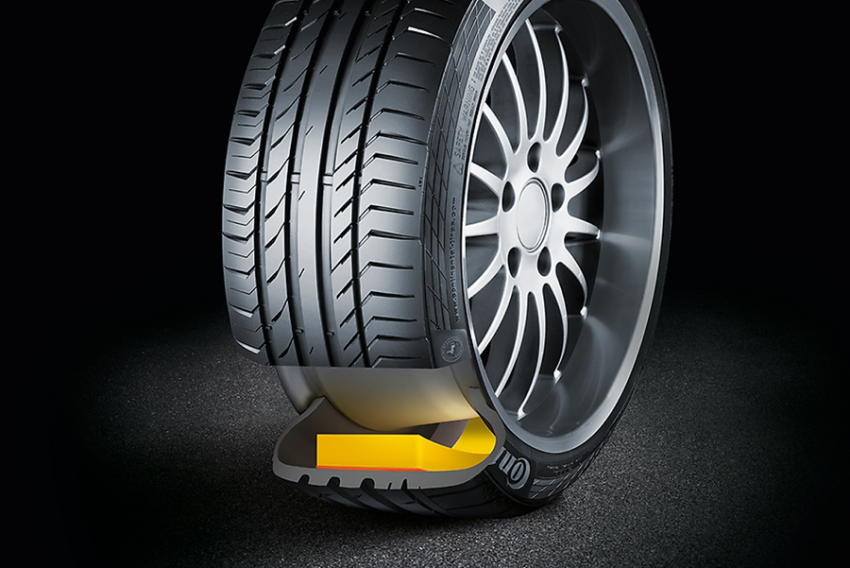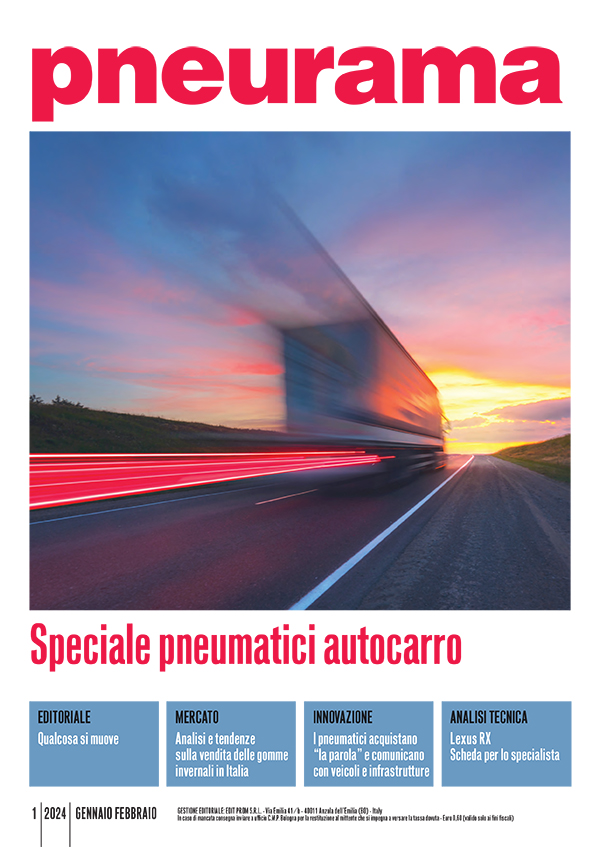As vehicles move, tires are subjected to continuous stress: tread blocks undergo huge amounts of friction and sidewalls flex and stretch continuously. These movements produce sounds that are annoying in the long run, but there is another source of noise: the air contained between the rim and the tire's casing. Tire cavity noise arises from the vibrations of this air, which, trapped between the rim and the tire cover, can resonate and vibrate in a manner similar to air in the pipes of an organ. Several vehicle and tire manufacturers have therefore studied some countermeasures to reduce the intensity of these unpleasant sounds, and in this article, we will look at some of the solutions they have developed.
Sound absorbing strategies
One of the most straightforward solutions is to place sound-absorbing material inside the wheel. This is usually a polyurethane foam placed inside the tire and glued firmly to the inner lining. The centrifugal force generated by the rotation of the wheel pushes it even further against the inner lining, making this a reliable solution, even mentioned in a patent by Japanese researchers and assigned to Sumitomo Rubber Industries, filed in the U.S. in 2001 and published in 2002. This foam "ring" is quite simple to use and proves effective, as it reduces the noise intensity in the passenger compartment by between 3 and 9 dB (decibels). Recall that the decibel is a logarithmic unit of measurement, so if a 3 dB reduction is equivalent to a halving of the noise, a 9 dB reduction reduces the noise to one-eighth of the starting noise.
Manufacturers' pursuit
The polyurethane foam damping ring is useful in general, although its effectiveness may depend on road surface conditions, and has been adopted by several manufacturers. Pirelli's idea, for example, is called Pncs - Pirelli Noise Cancelling System - and was launched in 2013. The increasing quietness of cars in the higher segments was followed by an explosion in the demand for quiet tires: as many as 78 tires by Pirelli were approved by several car manufacturers at the end of 2017, which nearly doubled to 150 at the end of 2018. The manufacturer claims that Pncs technology reduces noise by up to 25 percent but warns that the best results are achieved if the vehicles are specifically approved to fit tires equipped with the system. Tires that have this technology, such as the prestigious Pirelli P-Zero, are marked with the words "Pncs" and a speaker symbol with sound waves crossed out. Goodyear also has a solution to reduce tire noise: it is called SoundComfort and promises to reduce by up to 50 percent the noise produced by the wheels, most of which reaches the passengers. This sound barrier is available for several tires such as EfficientGrip, Eagle F1, and UltraGrip Performance.
Well-known names against unwanted sounds
Continental, as a tire supplier, is also in the game and has developed the ContiSilent system, whose polyurethane foam, the company points out, is guaranteed to be stable at different temperatures and compatible with different rims on the market. This technology can reduce noise that filters into the vehicle by up to 9 db A (taking into account the sensitivity of human hearing, which varies as frequency varies). ContiSilent technology is available for several tires, such as the ContiSportContact, CrossContact and IceContact, and does not affect either mileage or load and speed ratings. Michelin’s Acoustic Technology, on the other hand, can reportedly reduce interior noise by about 20 percent. The French brand points out that technology such as this can reduce driver and passenger fatigue, especially on longer trips. However, not only comfort is increased but safety too, as driver alertness is remains higher. Michelin tires equipped with Acoustic Technology include the Pilot Sport 4.
Perforated films and foam cylinders against noise
By contrast, Toyo chose an alternative way to reduce Tire cavity noise, shaping the absorbing foam differently. Japanese engineers conducted simulations of the behaviour of air inside the tire as it rolled, realizing that flows were created both along the circumference as well as in a radial direction. The idea, embodied in Toyo Silent Technology, was then to coat the inside of the tire with a thin, densely perforated film that slows down and causes the radial flow to lose force, thus reducing the noise associated with this air movement. Slowing down the circumferential flow was achieved by using sound-absorbing foam cylinders to lift the perforated film mentioned earlier into wave patterns: the moving air is slowed down by this conformation and the noise is further dampened.
“Silent tires” how to repair them
The adoption of these sound absorbing films and cylinders raises some concerns. Sometimes polyurethane absorbing layers, in case of pressure loss, can break apart, making tire repair more difficult. These "silent" tires will become increasingly popular as the number of electric vehicles in the market keeps increasing, so the question is of great concern. Tech (a well-known company in the tire products and equipment industry) for example claims to have developed a documented repair process dedicated to tires with this type of noise reduction system. The process requires some additional steps but is feasible and proposed by several other companies as well. Therefore, tire dealers should find out about it so as not to give up a part of their business that is likely to grow significantly in the future.
Honda offers a “resonating tire”
Honda, instead, came up with a solution that does not use foams or absorbing materials but employs resonators, that is, components that absorb sound not by "dampening" it as foam bands do but by generating a sound that can cancel the noise produced in the tire's inner cavity. Honda's approach starts from the idea that the size of the tire is a known factor, therefore it is possible to determine the "resonance frequency "of the cavity which generates the most annoying noises. If it were possible to generate a sound at that same frequency but 180° out of phase, and their theoretical "sum" would be a sound with zero intensity; in reality, the noise is not completely eliminated but greatly attenuated. Honda then considered utilizing Helmholtz resonance, which is a phenomenon that generates sound when, for example, a person blows across the top of an empty bottle. The shape and air capacity of the bottle determine the sound frequency.
Like a concert hall
Honda designed a resonator that wraps around the wheel, generating the same frequency as the pipe resonance generated by the tire. When pipe resonance occurs, the resonator begins to resonate at the same frequency, causing vibration due to air disturbance near the vents which allow air to pass through. This effectively cancels the pipe resonance sound. The shape chosen by Honda is reminiscent of sound-absorbing panels applied to the walls of cinemas and auditoriums. The small holes that cover these architectural elements constitute as many Helmholtz resonators, and indeed the components that Honda inserts into its Noise-reducing Wheels are densely drilled. These are resin elements attached to the rim, without using bolts or other fasteners. They withstand accelerations of up to 1,500 g (g is the acceleration of the force of gravity, which amounts to 9.81 metres per second per second) and can therefore cope with high-speed driving. Honda made the first resonator in 2010 and then developed the second generation, which has multiple resonance chambers distributed in one element as opposed to the previous 4 for a weight saving of 50 percent.


